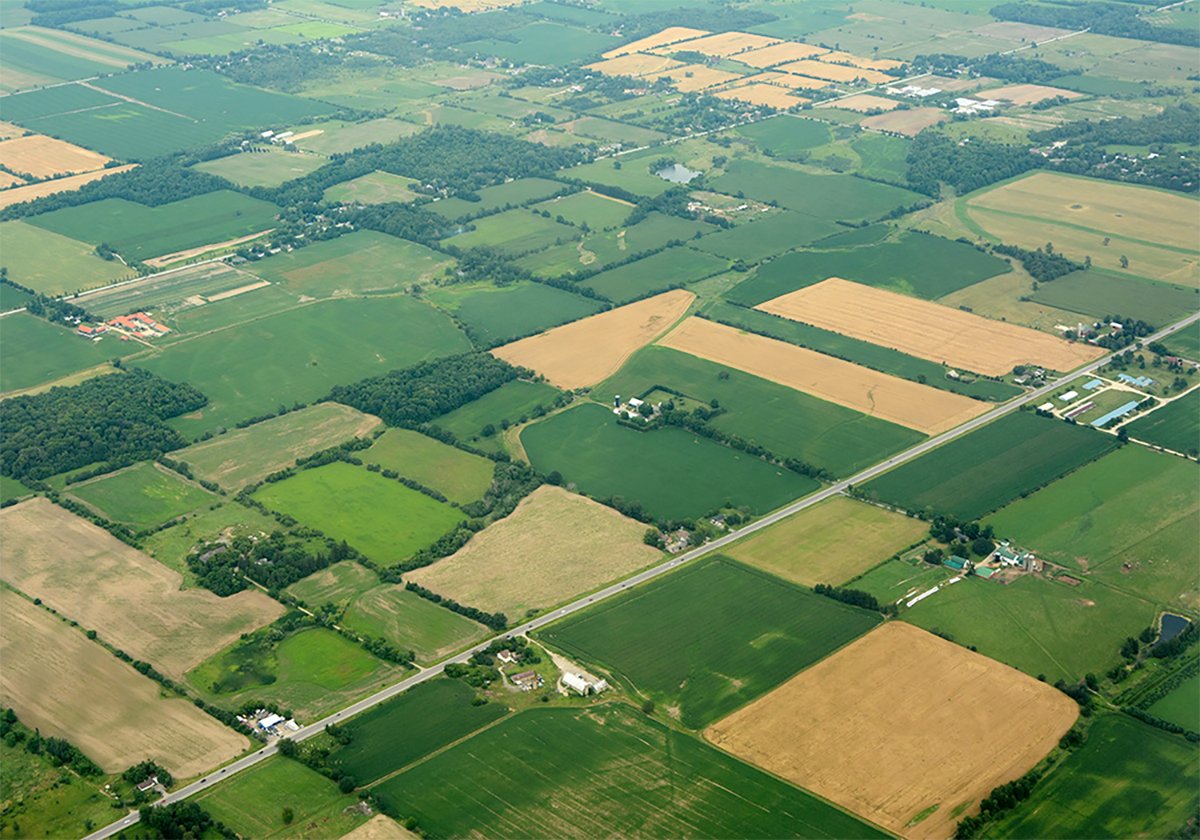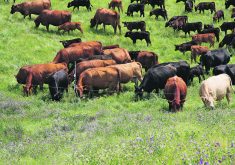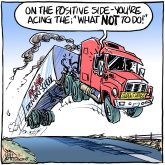Fertilizer prices; Plebiscite needed; GHG heroes; Basic sanitation; Marketing models
Fertilizer prices
I have been checking fertilizer prices on the internet lately and international prices have fallen dramatically.
As of today, prices in the Black Sea area for ammonia are $305 per tonne Cdn, and urea $284 per tonne. Our local price for urea is $990 per tonne and there is no indication of the price dropping.
In the last two years prices more than doubled. Fertilizer companies attributed that to high world demand and international prices. Now we are being told that the pipeline is full of high priced product and prices won’t come down till that supply is used up.
Read Also

Higher farmland taxes for investors could solve two problems
The highest education and health care land tax would be for landlords, including investment companies, with no family ties to the land.
When the international prices were going up, our cost increases were huge and immediate. Now world prices are one-third of our cost, and we are expected to pay the old, high prices?
At the current local price, it would cost approximately $1.50 for enough nitrogen to produce a bushel of $4.50 wheat; $1.14 for a bushel of $3 barley and $2.20 for a bushel of canola. Add to that the cost of other fertilizers your cost would be $2 for wheat, $1.50 for barley and $3.25 for a bushel of canola.
When you include the cost of fuel and chemicals, you are guaranteed to lose money growing a cereal crop.
It would be interesting to have someone from Agrium justify these prices, but then why should they? They have a near monopoly here in Western Canada.
– Roger Brandl,
Fort St. John, B.C.
Plebiscite needed
Prime minister Stephen Harper and the Conservative Party of Canada have received another mandate with a minority government.
With the support that the Conservatives have received comes a responsibility to govern with integrity. The opportunity to do so lies before Mr. Harper in how he deals with the Canadian Wheat Board issue. Quite frankly, farmers are tired of fighting over this issue and would agree the matter needs to be dealt with in a fair and democratic manner.
If you read the CWB Act, the process is incredibly straightforward and simple. However, the present Conservative government has chosen not to follow that path. The Conservative party desires that the designated grain, be it barley or wheat, would be removed from the jurisdiction of the CWB and would then become an open market commodity by regulation instead of legislation.
The CWB would be able to sell into that open market if it felt that it could compete.
But “a dual market is not possible” is the conclusion of pro-wheat board supporters. Although not publicly stated, it is the conclusion of anti-wheat board people as well.
Being from Alberta, I know that the Alberta government, Western Canadian Wheat Growers and other groups will say this is false. However, these groups have tried to play down the conclusions of the federal government’s own task force; a task force which stated that a dual market and a strong CWB cannot coexist.
To propagate the myth of the dual market with a strong CWB is less than honest and casts a shadow on the integrity of the federal government and other proponents of the dual market option.
I believe that farmers and farm groups would welcome a plebiscite that clearly asks a yes or no question: do the producers want the designated grain removed, yes or no? …
If the government is confident that producers want an open market for designated grains, it should be a very simple process. I would doubt that there would be any dispute from farm organizations or opposition parties if the results of a proper plebiscite clearly indicated that the majority of producers want barley or wheat removed from the board….
– Lynn Jacobson,
Enchant, Alta.
GHG heroes
Can smoke and mirrors ease global warming? (WP, Nov. 6.)The adaptation of society to deal with the global warming issue focuses on the reduction of greenhouse gas emissions.
Are there processes that remove carbon dioxide from the atmosphere? Yes there are.
Farmers do it every time they grow a crop. Where does the carbon come from in the molecules of starch in a wheat kernel? From the atmosphere. Where does the carbon come from in a molecule of oil in a canola seed? From the atmosphere.
Increasing production of crops to reduce greenhouse gasses is a realistic adaptation to this situation. Were these realities expressed in the Manitoba governments research into the greenhouse gas emissions by farmers? No. Why not is an interesting question.
Is it ignorance? Surely not, governments buy the best brains. Is it on the wrong side of the taxation issue? The green shift idea of the Liberals is to tax greenhouse gas emitters. Is the Manitoba government looking for more reasons to tax Canadians? If governments bought fertilizer for farmers to produce bigger crops, the effects of greenhouse gas emissions would be reduced. …
Farmers are the heros on the greenhouse gas issue.
– Clark Lysne,
Wetaskiwin, Alta.
Basic sanitation
Western folk climbing Everest may soon have an eco-friendly toilet to use, eliminating the need to dump in the open. Excellent news for the hundreds each year who make the trip.
Of course, elsewhere in the world, 2.6 billion people are without basic sanitation and hygiene, and very little progress is being made to reduce this number.
More people die from diseases related to poor sanitation than AIDS, TB and malaria. While simple latrines and hand washing with soap are cheap and obvious solutions, Canada virtually ignores them in its international aid programs.
So, filthy hands up: who gives a crap about basic sanitation and washing with soap in the developing world?
– Randy Rudolph,

Calgary, Alta.
Marketing models
After hearing the Throne Speech for the opening of Parliament, the agricultural policies of this federal Conservative government are getting curiouser.
The main policies put forward are restoring “freedom of choice” in grain marketing for western Canadian farmers and fiercely defending supply management for poultry and dairy farmers.
Of course, in Conservative new speak, freedom of choice in marketing means getting rid of the Canadian Wheat Board.
Radical opponents to the CWB use terms such as socialistic, communistic or bolshevistic to describe it. However, we are not told by the CWB what to grow, how much to grow or where to grow it. If we choose to grow CWB grain we can, or if we choose not to, we can grow a score of other crops that are not marketed by the board.
In supply management, which apparently the Conservatives are so taken with, farmers must purchase quotas in order to begin production and they cannot increase production without purchasing more quota.
This system was set up to guarantee a decent living for the producers. Yet this marketing system is not described as socialistic, communistic or bolshevistic.
What is the difference between these two marketing models? The difference is that the farmers who support the CWB live in Western Canada and the majority of farmers who benefit from supply management live in Ontario and Quebec where the Conservatives want to gain support.
In Western Canada the Conservatives are the beneficiary of the “yellow dog” syndrome.
In the pre-1960s Southern U.S. … it was said that the Democrats could run a yellow dog and it would get elected.
In Western Canada, particularly in Saskatchewan and Alberta, the Conservatives could successfully run Howdy Doody, Jerome the Giraffe or a yellow dog. In some cases they have.
Consequently, the Conservatives feel no need to consider other opinions or deal in a fair and democratic way in the wheat board debate because they think they have a stranglehold on the western political landscape.
However, the Conservatives do not feel so secure east of the Great Lakes. Again the interests of Western Canada are sacrificed on the altar of political ambition in Eastern Canada….
As far as agricultural policy is concerned, the Throne Speech is a perfect example of the hypocrisy and cynicism of this Conservative party and government.
– Michael Cobbe,
Limerick, Sask.














